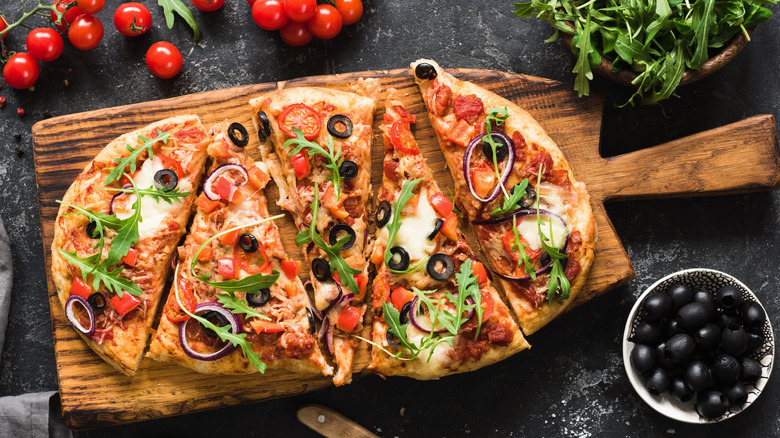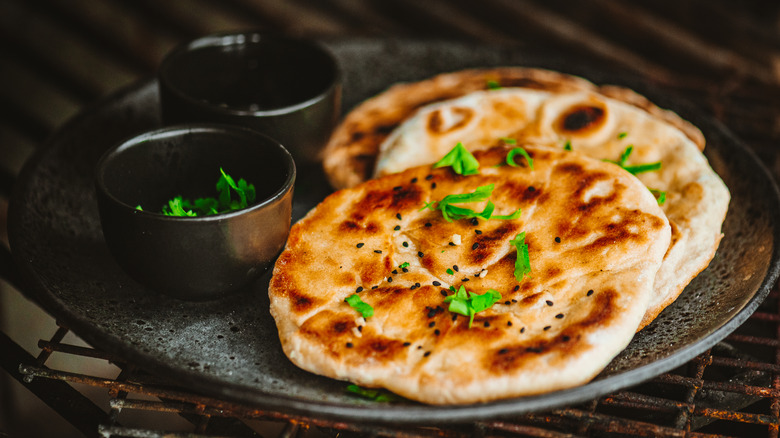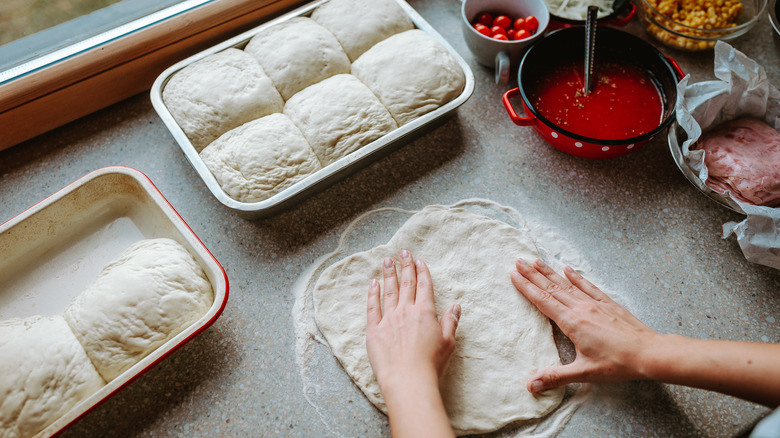The Subtle Difference That Separates Flatbread From Pizza
At first glance, it's easy to mistake a flatbread for a pizza or vice versa. And sometimes the words are used interchangeably — or even put together. (You've probably even seen a "flatbread pizza" on a restaurant menu.) But when it comes down to it, a flatbread and a pizza crust are not the same thing. The real main difference between pizza and flatbread comes down to the dough. Pizza dough usually relies on yeast to act as a leavening agent, which helps the dough rise and develop a bubbling, airy texture. Most flatbread recipes don't include yeast (hence the name).
In addition to the dough recipes, some think that size may be a distinguishing factor between pizza and flatbread. Flatbreads are typically smaller than traditional pizzas, which is why you'll often see a topped flatbread offered as an appetizer, not as a main meal. Others think that the shape could be a way to tell the two apart as many pizzas are circular, or rectangular (like Sicilian or Detroit-style pizza), and flatbreads often have a more freeform shape.
Why is a flatbread flat?
Flatbreads are commonly known for being unleavened, meaning that they are made without yeast. They typically consist of only a few simple ingredients. Flour, salt, water, and fat. The fat is often oil. And it seems that nearly every culture in the world has a recipe for some type of flatbread. In India, roti is often served with meals. It's a simple flatbread, also known as chapati, made with flour, water, oil, and salt. Injera is a flatbread found in Ethiopia, which shares a similar ingredient list, but uses teff flour instead of wheat flour. Moroccans made a flatbread called msemen that features a blend of regular flour and semolina flour.
Like nearly every rule, there are always a few exceptions. Several flatbreads do incorporate some type of leavening agent. Some use baking powder or baking soda and some even use yeast. Popular flatbread-style breads, such as naan and pita bread, usually come from dough made with yeast.
Yeast is key for pizza dough
Just like most bread doughs, yeast plays a key role in many pizza dough recipes. Often the first step in forming the dough is putting the yeast in warm water. This allows for yeast to reactivate. But be careful that the water is not too hot as it will kill the yeast and the dough won't rise. And it's the yeast that helps make the dough puffy and light. Some recipes call for using 00 flour, which is ground finer than all-purpose flour and gives the dough a softer texture.
The ideal pizza dough needs to be allowed to rise. Many recipes recommend allowing the dough to proof for roughly three hours and some even suggest leaving it in the fridge overnight. Even most thin-crust pizza dough recipes follow this leavening process. However, some may use less yeast than a traditional dough to help achieve that desired thin and crunchy texture.


